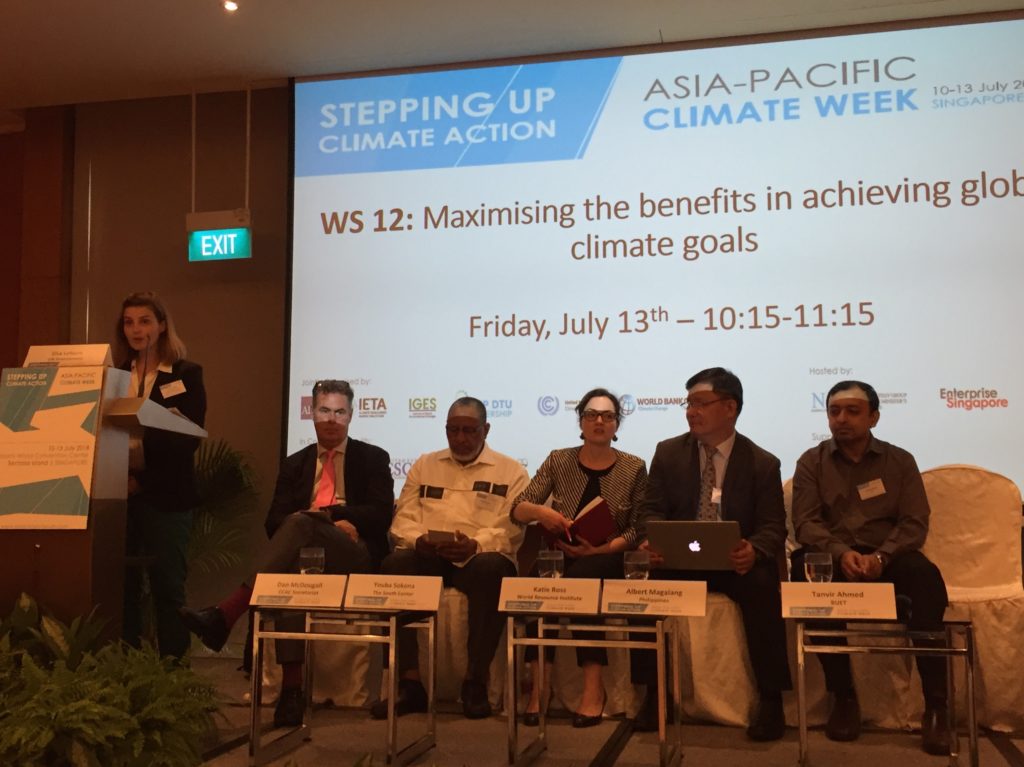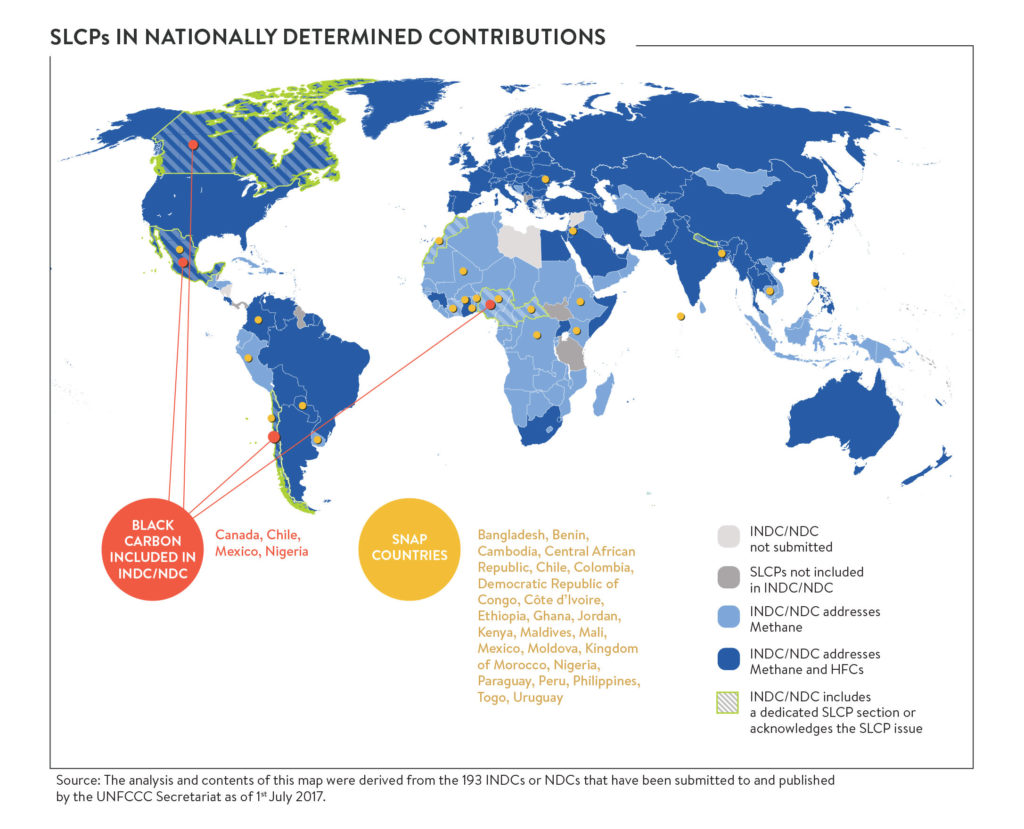Tackling short-lived climate pollutants reaps clear gains in public health and food security while being crucial to achieving the goals of the Paris Agreement.
That was the premise of an event led by the Climate and Clean Air Coalition on the last day of this year’s Asia Pacific Climate Week in Singapore, with panellists from the Intergovernmental Panel on Climate Change, national government, academia and research.
“There is no pathway to the Paris Agreement without action on short-lived climate pollutants,” said Senior Fellow at the Coalition, Dan McDougall, kicking off the event, “Maximizing Benefits in Achieving Global Climate Goals”.
“It is not just about the temperature goal, but also the Sustainable Development Goals and the attempt to link the two things at the technical and policy levels, and asking, what’s a more comprehensive way to take action for an enhancement of political will,” he said.

Climate and Clean Air Coalition event at Asia Pacific Climate Week in Singapore discusses ways to deepen climate ambition
It’s not new knowledge, as Special Advisor on Sustainable Development and Vice-Chair of the Intergovernmental Panel on Climate Change (IPCC), Youba Sokona pointed out, but with current commitments to the Paris Agreement insufficient to meet its goals, the potential broader gains from complementary approaches have become difficult to ignore.
“Why now and not before? Because now (there is broad realization that) there is an urgency to address these emissions in order to to limit the rate of temperature rise in near- and long-term, as indicated in the IPCC reports, but it’s much wider than that,” he said.
The integrated impacts of short-lived climate pollutants are related to health, ecosystems, agriculture and food security, he pointed out.
“There are different pathways to reach the Paris Agreement target,” Sokona said, “but the path we take matters and by considering the integrated impacts of short-lived climate pollutant, CO2, and air quality strategies and reducing them in the near term we can prevent additional premature death and reduce current rate of warming.”
According to the Coalition, fast action on a large scale to reduce black carbon, methane, tropospheric ozone and hydrofluorocarbons (HFCs) would accrue health benefits, notably avoiding 2.4 million premature deaths from air pollution, while agriculture would claw back 52 million tonnes in avoided crop losses from four major staple crops per year.
Also, it would potentially slow warming by 0.6 degrees Celsius by 2030, though longer-term climate protection would need simultaneous deep and rapid cuts in carbon dioxide emissions.
While the health, food security and associated economic benefits of cutting air pollutants, including short-lived climate pollutants, are clear, what is not clear is where the action is happening.
For example, the majority of countries include methane emissions in their Nationally Determined Contributions (NDCs), but not all, and only four include black carbon emissions (see diagram); and while the Kigali Amendment to the Montreal Protocol governs HFC emissions, tropospheric ozone, which damages human lungs, agriculture and ecosystems, is not regulated under any international agreement.

Asia-Pacific countries already moving on air pollutants
It is clear, however, that several Asia-Pacific countries already consider air pollutants that have impacts on climate change in their planning and development processes.
Among them is the Philippines, which uses the Coalition’s methodology to take an integrated approach to addressing both air pollution and climate change.
“We are engaging in a process to assess how to address both in terms of co-benefits as a way to support the implementation of our NDC,” said Chief, Climate Change Division, Environmental Management Bureau, Department of Environment and Natural Resources of the Philippines, Albert Magalang.
“The Philippines has already commenced national planning for SLCPs, which will be incorporated in the national database, making them part of our data infrastructure,” he said.
“We like the multiple benefits approach because it is an analytical framework that allows us to quantify the benefits over time,” he said, adding that it has generated a lot of interest among partners.
Other countries, like Bangladesh, among the world’s most vulnerable nations to climate impacts, are acutely aware of the health benefits of reducing short-lived pollutants and its climate co-benefits.
“There is a lot of burning of municipal solid waste because there are few landfills, and high use of traditional cookstoves and traditional brick kilns,” said Associate Professor, Department of Civil Engineering, Bangladesh University of Engineering and Technology, Tanvir Ahmed.
“SLCP measures can achieve up to about 16,000 avoided premature deaths per year in Bangladesh,” he said.
“There is an interest in how much of these measures can accrue benefits when adopted,” he said.
Countries are also looking at other “pathways” in the context of the Paris Agreement process, which requires them to regularly review their nationally determined contributions to “reflect the highest possible ambition” and demonstrate progression over time.
“With measures to tackle short-lived climate pollutants, we can help shift the focus from cost of action to benefits for climate, public health and productivity,” said the Coalition’s McDougall.
For an example for how a single issue has implications across the board, read: The contribution of short-lived climate pollutants to the Sustainable Development Goals